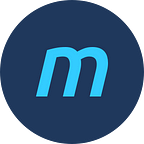Anatomy of an Optimally Designed Modal
Designing a modal is no easy task when there’s a lot to fit in such a tiny window. Throwing content inside and hoping it works is what most designers do. However, users can have trouble processing the information without the proper structure. You can make your modals easier for users to process if you design them with the optimal anatomy.
Modal Anatomy
Every modal needs a header and footer. The header is where the title and “close” icon goes. The title is necessary to affirm to the user what task they’re doing if they forget or lose focus.
The “close” icon is a button that functions as a clearly marked exit for users to return to their previous screen. Giving users freedom and control of the interface allows them to correct their mistakes and explore without fear.
The footer contains a button tray, where you can place different buttons. Typically, you would include a primary button with a “Cancel” button that closes the modal just like the “X” icon does. Providing both buttons enables users to exit the modal without reading any text. The “X” is a safe, familiar, and reliable exit they easily recognize across platforms.
The content area is between the header and footer, where you can put text, images, or input components. Each content item is contained in a row that…
